 Adding to the trial-divisor 3 ab, that is, three times the product of the first term of the root by the second, and... Adding to the trial-divisor 3 ab, that is, three times the product of the first term of the root by the second, and...  Elements of Algebra - Page 93by Silvestre François Lacroix - 1818 - 276 pagesFull view Elements of Algebra - Page 93by Silvestre François Lacroix - 1818 - 276 pagesFull view - About this book
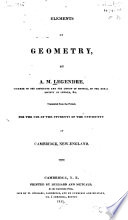 | Adrien Marie Legendre - Geometry - 1819 - 574 pages
...square of its first term must necessarily form the first term, 16 a* c*, of the proposed quantity ; double the product of the first term of the root by the second must give the second term, 24 a* 6* c, of the proposed quantity ; and the square of the last term of... | |
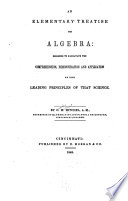 | Ormsby MacKnight Mitchel - Algebra - 1845 - 308 pages
...term of the root. To get the third term of the root, complete the divisor by adding to it three times the product of the first term of the root, by the second term, plus the square of the second term. Multiply the complete divisor by the second term of the root,... | |
 | Charles William Hackley - Algebra - 1846 - 542 pages
...root Gx 3 ; multiplying the whole of this quantity, 6r > —2z > , by — 2x* (which produces twice the product of the first term of the root by the second, together with the square of the second), and subtracting the product from the first remainder, we obtain... | |
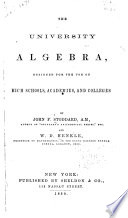 | John Fair Stoddard, William Downs Henkle - Algebra - 1859 - 538 pages
...polynomial the square of the first term of the root, the first term of the remainder will be twice the product of the first term of the root by the second term of the root ; hence, we shall obtain the second term of the root by dividing the first term of... | |
 | Shelton Palmer Sanford - Algebra - 1879 - 348 pages
...the second term of the root. To form the complete divisor, we add to 362 (the trial divisor) 3 times the product of the first term of the root by the second, and also the square of the second. We shall then have 3b'+3bx + x2 as the complete divisor. Multiplying... | |
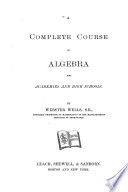 | Webster Wells - Algebra - 1885 - 370 pages
...term of the root, we obtain I, the second term. Adding to the trial-divisor Зa6, that is, three times the product of the first term of the root by the second, and 62, that is, the square of the last term of the root, completes the divisor, Зa2 + Зa6 + б2.... | |
 | Webster Wells - 1885 - 368 pages
...term of the root, we obtain b, the second term. Adding to the trial-divisor 3ab, that is, three times the product of the first term of the root by the second, and 62, that is, the square of the last term of the root, completes the divisor, Зa8 + Зab + 62.... | |
 | Webster Wells - Algebra - 1885 - 382 pages
...root, 12 x4, we obtain — 3y as the second term of the root. Adding to the trial-divisor three times the product of the first term of the root by the second, — 18 x2y, and the square of the second term, 9т/2, completes the divisor, 12 ж* — I8x2y + 9ys.... | |
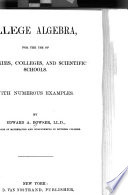 | Edward Albert Bowser - Algebra - 1888 - 868 pages
...Also, since 3o26 + 3a62 + bs = (3a2 + Sab + b*)b, we add to the trial divisor Sab + &2, ie, three times the product of the first term of the root by the second, plus the square of the second, and we have the complete divisor 3a2 + Sab + b2 ; multiply this complete... | |
 | Webster Wells - Algebra - 1889 - 584 pages
...the root, and write the quotient as the next term of the root. Add to the trial-divisor three times the product of the first term, of the root by the second, and the square of the second term. Multiply the complete divisor by the term of the root last obtained,... | |
| |